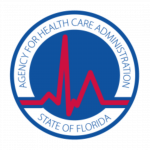Are you wondering what heroin is, and how it affects the body and brain? Then keep reading.
Heroin: What is it?
Heroin (diacetylmorphine) was synthesized from morphine in 1874 by C. R. Alder Wright, a British chemist working at St Mary’s Hospital Medical School in London, England.
Heroin is the most rapidly acting opium alkaloid. It is a narcotic analgesic. The word “narcotic” derives from the Greek word ‘narkē’ which means numbness or stupor. It induces short-term euphoria, euphony, and a sense of relaxation and peace.
Effects of heroin
Heroin’s effects on the body depend on several factors:
- the dose and purity of the drug
- time since last use
- age at last use
- route of administration (smoking, snorting, or injection)
- presence of other drugs in the bloodstream
Overdosage
Narcotics and Opioids are substances that can be used to manage pain. They interfere with the natural opioid receptors in the brain. This drug is a highly addictive substance that has been rapidly dispersed throughout North America and Europe in the last few decades. Heroin overdoses have been occurring in increasing numbers across the world since 2013, as have related deaths due to overdose. The Substance Abuse and Mental Health Services Administration (SAMHSA) recorded approximately 669,000 heroin-related visits to emergency departments across North America between 2002-2013, costing $6 billion annually for treatment services. Death by overdose is also on the rise as well, due to the rise in alcohol poisoning. Among the symptoms of overdose are the following.
- trouble concentrating
- extreme drowsiness or falling asleep (‘going on the nod’)
- small (‘pinned’) pupils
- wanting to urinate but finding it difficult to do so
- itchiness
- low blood pressure
- irregular heartbeat
- cold, clammy skin
- slow breathing, blue lips, and fingertips
- hypothermia
- passing out
- death
In the event of an overdose, naloxone (also known as Narcan®) reverses the toxicity of heroin and other narcotics. Naloxone may be inserted intramuscularly (directly into a muscle) or sprayed into the nose.
Heroin Abuse and Addiction
Heroin is an opiate drug that is highly addictive and is frequently abused by using it intravenously (IV) or through inhalation (smoking). As a result, users often experience various medical complications, ranging from respiratory failure to overdose or death. Heroin use can cause severe psychological dependency in those who inhale the drug, which can lead to a physical dependence on the drug. How quickly they reach addiction varies from individual to individual. Individuals are likely to start using it when they are teenagers and most commonly use it intravenously, though some will also smoke when injecting.
Physical dependence is not considered to be physically addictive but is a medical term that describes dependence on a chemical substance. It manifests in several ways, including cravings for the substance and withdrawal symptoms when the use of the substance is discontinued. When physical dependence develops, side effects are more likely to occur when the use of the drug is reduced or withdrawn. One heroin dose can produce a ‘rush’ beginning within one minute of contact with the drug and lasting perhaps three to seven minutes. This is the most intense phase of euphoria from the drug. The addict may feel that he has never felt this good before or that if he makes it through this present crisis, he will be okay.
The ‘rush’ gives way to drowsiness, mental confusion, nausea, vomiting, and plummeting blood pressure and heart rate.
Symptoms of heroin withdrawal
If you are struggling with a heroin addiction, it is important to seek help from a treatment program. Withdrawal symptoms can be very difficult, and on their own, they can be enough to keep someone dependent on the drug. Some of the most common symptoms of heroin withdrawal include:
- A restlessness that is relieved by more drug use – To avoid uncomfortable withdrawal symptoms, people often use more of the drug or more frequently than they plan to. This can lead to long-term abuse, even after going through withdrawal because of cravings caused by memories of the high.
- Anxiety – This is one of the most difficult symptoms to avoid during withdrawal, and it can lead to self-medicating with heroin or other drugs.
- Exhaustion – If you take heroin during the day, you may need some time to adjust to sleeping through the night without it. Addicts often find that they have trouble sleeping even after their body has adjusted and may keep using it out of habit.
- Flu-like symptoms – It is common for people going through withdrawal from heroin to experience flu-like symptoms. These include fatigue, aches, chills, fever, nausea, and vomiting.
- Insomnia – People going through heroin withdrawal often find they can no longer fall asleep easily. They may be too uncomfortable to fall asleep, or they may have nightmares and other sleep disturbances.
- Mood swings – A person with heroin addiction will usually experience mood swings even if they don’t use the drug at all. However, the mood swings during withdrawal are much more intense, and they may lead to violence or other problems.
- Muscle aches – The effects of withdrawal from heroin can also cause physical pain in the arms and legs especially after using the drug for many years.
Heroin Treatment
There are several effective treatments for heroin addiction, including behavioral therapies such as contingency management and cognitive-behavioral therapy. These are useful treatments for opioid use disorder, and pharmacological or medications.
Some medications that have been shown to be effective in Heroin Treatment are:
- Methadone
- Buprenorphine
- Naltrexone
These medications are particularly used on a patient’s specific medical needs and other factors.














